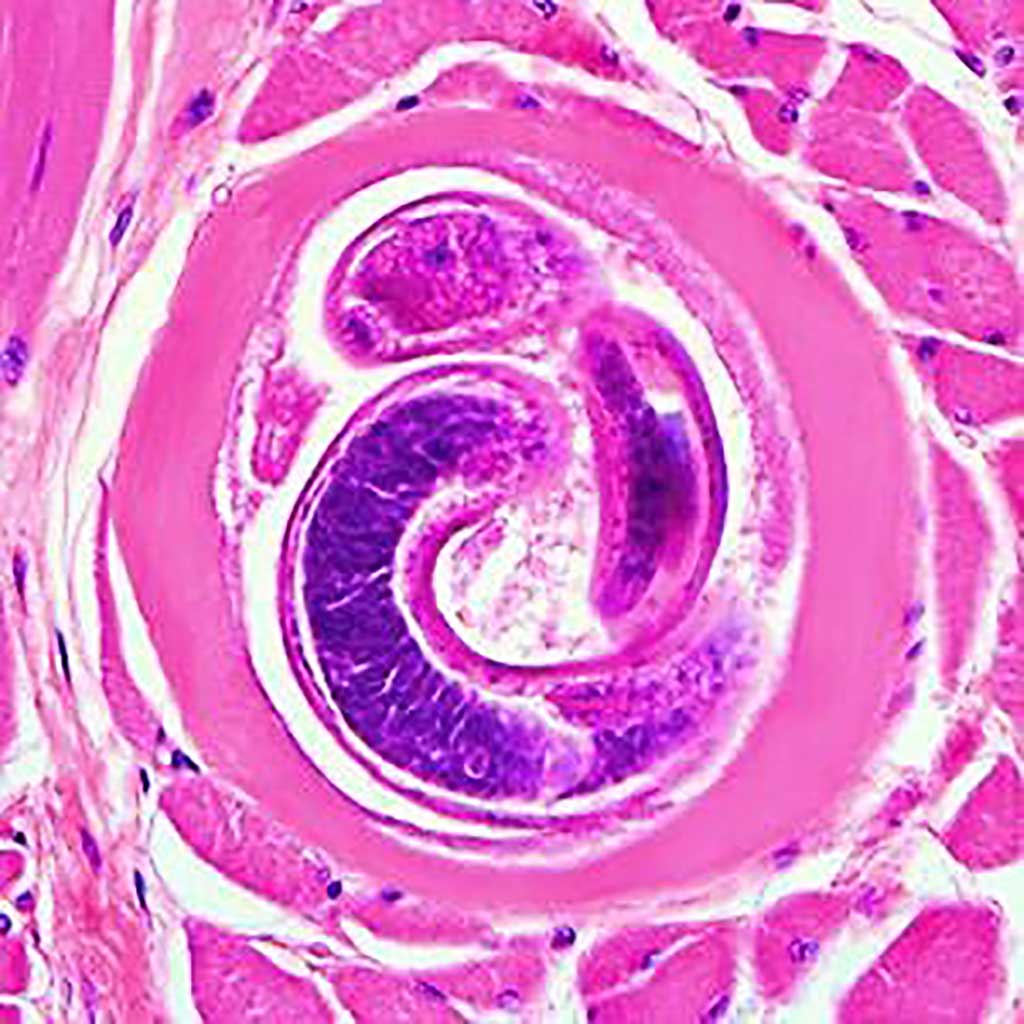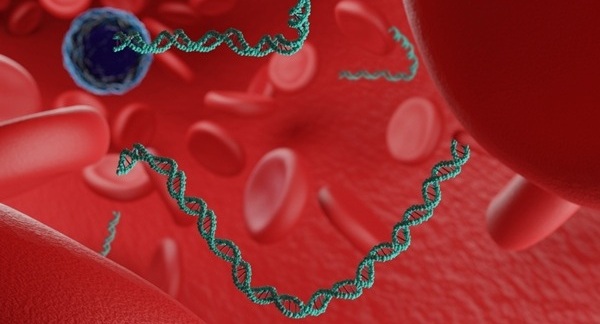P-O-C Test Detects IgG Antibody in Serodiagnosis of Human Trichinellosis
By LabMedica International staff writers
Posted on 23 Nov 2021
Trichinellosis is one of the most critical food-borne parasitic zoonoses worldwide. Humans acquire trichinellosis by ingesting raw or undercooked meats containing the infective Trichinella larvae. Adult Trichinella spp. reside in the intestinal tract of the vertebrate host; larvae can be found encapsulated in muscle tissue.Posted on 23 Nov 2021
There are two classes of methods for the detection of Trichinella infection in humans or animals. Methods such as trichinoscopy (compression method) and the artificial digestion method directly test for the presence of parasites in tissues or digests. The other class of methods indirectly demonstrates infection by detecting specific antibodies using serological methods.

Image: Histopathology of encysted larvae of Trichinella sp. in muscle tissue (Photo courtesy of Centers for Disease Control and Prevention)
Medical Parasitologists at the Khon Kaen University (Khon Kaen, Thailand) and their colleagues developed an immunochromatographic test (ICT) kit to diagnose trichinellosis by detecting IgG antibodies in sera of infected humans. Human serum samples were used for the evaluation of the diagnostic properties of the test. The samples were divided into three groups: 1) the negative control group (n = 30) comprised samples from healthy adult volunteers who were free (based on stool examination using the formalin ethyl-acetate concentration technique (FECT); 2) the trichinellosis group (n = 31), which comprised samples from outbreak cases in northern Thailand) and 116 serum samples from patients with parasitic infections other than trichinellosis.
The team used somatic extract from Trichinella spiralis larvae was used as the antigen for the immunochromatographic test (ICT) kit development. Diagnostic efficacy was evaluated using human serum samples from proven trichinellosis patients, healthy persons, and those with other parasitic infections. The ICT device for diagnosing human trichinellosis was designed based on the specificity of antibodies against T. spiralis larval somatic antigens.
The investigators reported that all 31 trichinellosis serum samples yielded positive results using a cutoff value of 1. In contrast, none of the 30 healthy control sera showed positive results. Cross-reactivity was observed in serum samples from cases of gnathostomiasis (1 of 10), cysticercosis (1 of 10), paragonimiasis (3 of 10), and fascioliasis (6 of 10). The diagnostic values of the trichinellosis (Ts)-ICT were calculated with the results from all serum samples. The diagnostic sensitivity, specificity, positive and negative predictive values and accuracy of the ICT kit were 100.0%, 92.5%, 73.8%, 100.0%, and 93.8%, respectively.
The authors concluded that the ICT diagnostic kit can be used as a testing tool for human trichinellosis. This test should permit rapid detection of infection to enable prompt anthelminthic treatment. It can also be used for retrospective diagnoses and field surveys based at laboratories where sophisticated equipment is lacking. The study was published in the October, 2021 issue of International Journal of Infectious Diseases.
Related Links:
Khon Kaen University









 assay.jpg)



